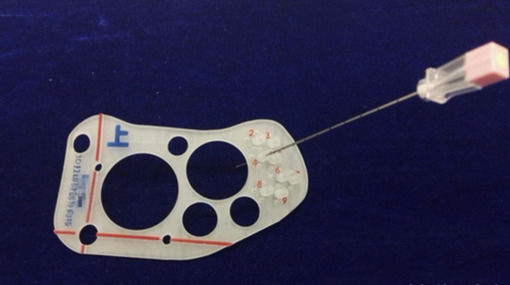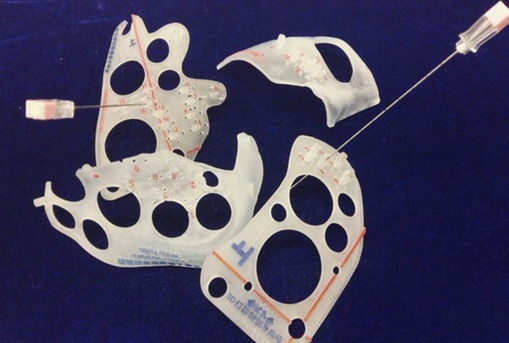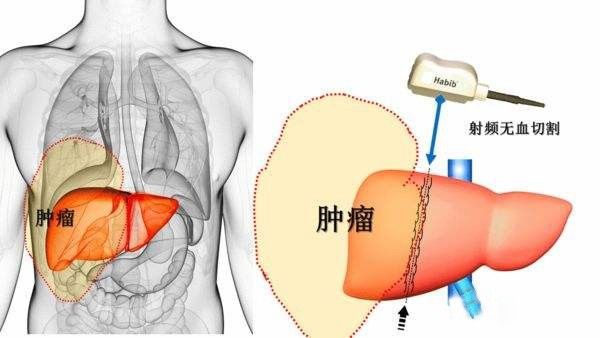Radiation therapy for cancer has been nearly a century old, from the "old-fashioned" technology to today's "precision penetration, fixed-point blasting", the new technology can be described as updating every year. Recently, at the 17th National Conference on Cancer Therapy on Cancer, held at the Guangzhou Baiyun International Center, experts from around the world explored the problems and future development of radioactive particle therapy for tumors. The dose is a bottleneck, and 3D printing technology is expected to break through.

3D printed guide for lung tumors, accurately implanted radioactive particles through long needles
Particles are implanted into tumors to continuously and effectively destroy tumors
Unlike radiotherapy on the body surface, radioactive particles (iodine-125) are used to treat tumors in close proximity. First, after the particles are implanted in the body, they are irradiated from the inside to the outside. It is not uniform radiotherapy. The closer to the tumor position, the larger the dose of radiation. Moreover, the half-life of the particles is 59.6 days (60 days is required to emit about half of the dose), and it can be continuously irradiated in the body, thereby inhibiting the self-repair of the tumor cells.
Director of the Department of Oncology, Modern Hospital, Bai Haishan pointed out that particle implantation for the treatment of malignant tumors has been widely used in the treatment of male prostate cancer in foreign countries, and is mainly used for early treatment of prostate cancer. Later, more and more tumors have been proved to be suitable for particle implantation therapy, such as cervical cancer, breast cancer in women, liver and lung metastasis such as liver cancer, lung cancer and other malignant tumors.
In fact, the effect of radioactive particles on the treatment of tumors is also obvious. According to the chairman of the conference, the chairman of the China Anti-Cancer Association, the director of the Department of Interventional Therapy, and the director of the interventional department of the Cancer Center of Sun Yat-sen University, Professor Zhang Fujun, the Cancer Hospital of Sun Yat-sen University has treated 300-400 patients every year. Due to the small side effects, the treatment effect is obvious, and the tumor can disappear or decrease by at least 25% after one month of implantation.

3D printed guides for accurate implantation of radioactive particles through long needles
Dose is a bottleneck, 3D printing technology is expected to break through
There has always been a critical issue in the technology of radioactive particles for the treatment of tumors. Zhang Fujun said that at present, how much dose of particle implantation depends mainly on the doctor's clinical experience. Although the high dose of radioactive example eliminates the tumor, is the dose of the particles the most reasonable? Are we generally using more particles?
From the point of view of killing tumor cells, it is recommended that the target dose received in the target area has a therapeutic advantage when it exceeds 20% of the prescribed dose, but becomes a "excess" dose when the dose is higher (more than 30% of the prescribed dose). Particle-treated lesions usually disappear within a month, and there are 3/4 doses in the body, and the remaining particles are extra doses. This may lead to late-onset side effects such as radiation pneumonitis.
How to solve this problem? Zhang Fujun said that in addition to the doctors' accumulated clinical experience, the application of new technologies for 3D printed particle implantation therapy may also help solve this problem. The previous release of particles is based on the doctor's personal experience, 3D printing module technology, positioning three-dimensional, from the plane point to the longitudinal depth, and then to the particle dose, are accurately calculated, can effectively avoid blood vessels, nerves and bones, thereby improving the control And the accuracy of the operation, shorten the operation time and reduce the pain of the patient.

The implantation of radioactive particles has changed from "experience-based technology" to "computer-assisted precision guidance", making the widespread use of this technology significantly improve the effectiveness and safety of particle therapy. It can be said that the radiation dose required to eliminate the tumor, where the implant should be placed in order to most effectively eliminate the tumor, can be accurately calculated and formulated in advance.
It is understood that nearly 30 patients at the Cancer Hospital affiliated to Sun Yat-sen University have used 3D printed particle implantation therapy. Zhang Fujun said that if 3D printing makes homogenization, unification and standardization of particle therapy, if it can be scientifically promoted, it will make particle technology truly mature and enter the main epidemic of cancer treatment.
(Editor)
Our kitchen taps with strict surface treatment, ensuring no flaw in the surface of the product, corrosion resistance, timeless. YUFA kitchen faucets use ceramic valves which is tested for up to 600,000 life cycles at 90 degrees. Every product is under Ultrahigh Hydraulic Pressure Test, which ensure no leak or burst problem so that every customer could trust us and buy our products. Our kitchen taps can be all kinds of functions, like pull out, pull down, cold/hot water, only cold water, etc. And the material we also can both produce brass faucets and stainless steel faucets. The price range is widely, from middle level to high end, can meet different clients needing.
Kitchen Taps,kitchen sink faucets,Kitchen Mixer Taps,taps for kitchen
Kaiping Yufa Sanitary Ware Co.,ltd , https://www.yufa-bathroom.com